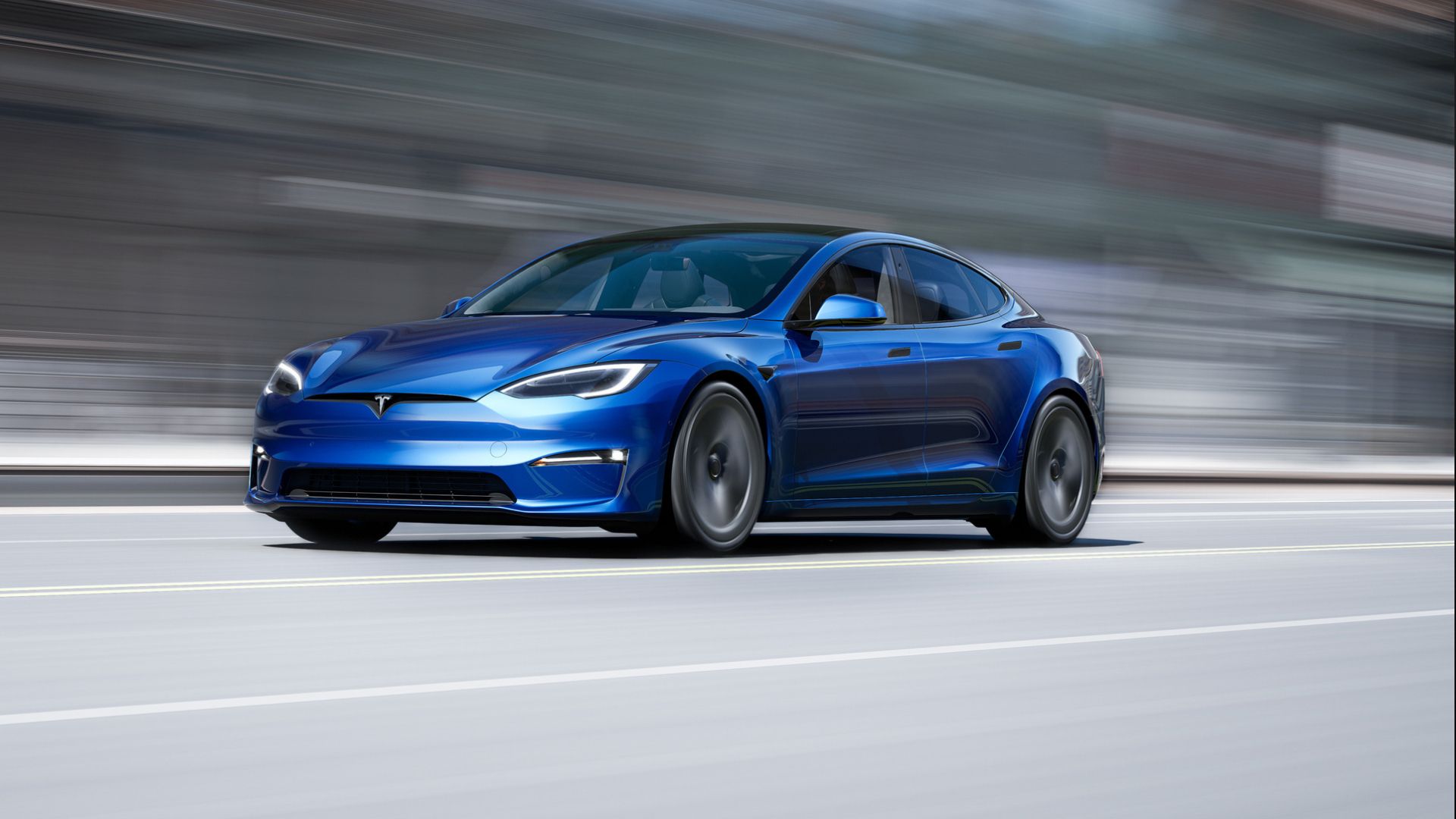The automotive market can be intimidating, especially when you can’t understand what any of it means. With new vehicle prices set to drop in 2024, people are starting to research the market and find a car that best suits them. Electric vehicles (EVs) have been on the rise while hitting record-breaking sales for many reasons. One is that the general appeal of EVs is that they are efficient in terms of cost and economy. Numerous studies have suggested that rapid depreciation of EVs is imminent. Factors vary from long-term battery costs to charging infrastructure, raising the question of “What EVs have the lowest five-year ownership cost?”.
As many know, understanding any market comes down to research, analysis, and statistics. In order to find how much you’ll spend in five years, you’ll need to factor in fuel, which in this case is electricity, along with maintenance, depreciation, environmental, and other costs. Buying a car can be stressful, much like purchasing a house, but it’s a big step in many people’s lives. Here are the top 10 EVs that won’t cost you an arm and a foot after five years.
In order to give you the most up-to-date and accurate information possible, the data used to compile this article was sourced from various manufacturer websites and other authoritative sources, including Vincentric, Kelly Blue Book, and Edmunds. The models below have been ranked based on their total ownership costs from lowest to highest over 5 years.

Here’s When EVs Will Be As Affordable As Gas-Powered Cars
With the ongoing price war, tax credits, and direct competition from China, EVs could soon reach price parity with gas-powered cars.
1 2024 Nissan Leaf S 4D Hatchback
Total Ownership Costs Over 5 Years: $46,916
The 2024 Nissan Leaf S has an attractive price, but sitting in first place isn’t always the best. This opens the door to someone wanting to get their hands on an EV while on a budget.
5-Year Summary Costs
|
MSRP |
$29,225 |
|
Fuel |
$2,965 |
|
State Fees |
$2,378 |
|
Depreciation Cost Over 5 Years |
$20,171 |
|
Financing |
$4,452 |
|
Repairs |
$1,724 |
(Data collected from Kelly Blue Book)
The 2024 Nissan Leaf S has an attractive price, but has its limits. A significant reason for its price tag is the limited range, which comes to 149 miles. While there are better EVs on the list, it does sound nice that you only have to pay fifty dollars a month for fuel. The Nissan Leaf S ranks number one as the lowest depreciated EV on the list. While it doesn’t come with many of the fancy features of higher-class EVs, it sets the standards for what an affordable EV should look like.
Pros
- Great entryway into owning an EV.
- It comes with standard driver-assist technology.
- Quiet driving experience compared to other less expensive EVs.
Cons
- The CHAdeMO port is less used and harder to find than other charging ports.
- The 2024 refresh on the Leaf leaves no big changes.
- Competitors offer cheaper EVs with more range.
2 2024 Volkswagen ID.4 Standard 4D SUV
Total Ownership Costs Over 5 Years: $49,733
When purchasing a vehicle, you typically want the most out of what you pay for. The Volkswagen ID.4 provides just that through its standard features, efficiency, and affordability.
5-Year Summary Costs
|
MSRP |
$41,160 |
|
Fuel |
$3,064 |
|
State Fees |
-$4,451 |
|
Depreciation Cost Over 5 Years |
$30,104 |
|
Financing |
$5,985 |
|
Repairs |
$2,263 |
(Data collected from Kelly Blue Book)
The ID.4 is on the list of federal point-of-sale rebates, which lowers the purchasing price. While some might not know about the qualifications for tax credits and rebates on EVs, the overall takeaway is that it is stricter and harder to qualify. The advantage to this is the $7,500 rebate that comes with the ID.4. You’ll be making money back on this car, but it does lack some appeal.
The interior has a minimalist design with little standing out. The single-battery motor makes up for its blandness by providing 288 horsepower, making it quick among its class. The ID.4 is an excellent vehicle for someone wanting a well-rounded EV that’s reliable and affordable.
Pros
- Volkswagen will give new owners complimentary charging for three years.
- Impressive turn radius which helps when parking and performing a U-turn.
- Receiving more powerful motors which increase performance.
Cons
- The cabin displays a lot of plastics.
- Infotainment isn’t user-friendly.
- The ID.4 standard has an unimpressive driving range of 291 miles.
3 2024 Kia Niro EV Wind 4D SUV
Total Ownership Costs Over 5 Years: $50,903
Kia has produced some impressive electric vehicles over the years. This driver-centric compact SUV offers an abundance of standard features and great value for money.
5-Year Summary Costs
|
MSRP |
$40,975 |
|
Fuel |
$2,867 |
|
State Fees |
$3,157 |
|
Depreciation Cost Over 5 Years |
$28,251 |
|
Financing |
$6,234 |
|
Repairs |
$686 |
(Data collected from Kelly Blue Book)
The Niro EV is underrated compared to the others on the list. Its competitive fuel economy and aesthetically pleasing design distinguish it from the first two models. Kia develops its cars around reliability and affordability, and these traits are shown in the Niro. It also helps that the 2024 Niro received a fresh look both inside and out, bringing modern commodities to the SUV. If you’re in the market for a simple but practical EV, then the Niro might be a contender in your car lineup.
Pros
- Kia will give new owners complimentary charging for three years.
- Standard with driving assist features and modern technologies.
- Spacious and comfortable cabin for its class.
Cons
- Feels slow compared to other EVs in its price range.
- Lacks excitement when behind the wheel.
- Only comes in front-wheel drive.

Here’s How Much It Costs To Charge An Electric Vehicle
With more people switching to fully electric driving, it won’t hurt to understand how much charging an EV will cost you.
4 2024 Mini Cooper Electric SE 2D Hatchback
Total Ownership Costs Over 5 Years: $51,942
A car with some fun and agility has arrived, and it’s no surprise that it could be the Mini Cooper. While it’s slower than the models above, it makes up through its rigid chassis and tight suspension.
5-Year Summary Costs
|
MSRP |
$31,895 |
|
Fuel |
$3,064 |
|
State Fees |
$2,583 |
|
Depreciation Cost Over 5 Years |
$20,189 |
|
Financing |
$4,921 |
|
Repairs |
$1,426 |
(Data collected from Kelly Blue Book)
The Mini Cooper checks off the majority of the boxes until you get to its range. Fuel economy is a huge factor when owning an EV, and 114 miles just doesn’t cut it. On the flipside, you get that iconic body and futuristic interior. There’s much to praise about the Mini, such as its potential to provide a fun weekend car while leaving zero emissions behind. This is a solid car for someone who doesn’t jam-pack their car with storage and has short-distance commutes.
Pros
- It is one of the most affordable EVs on the market.
- Fun car to drive.
- The base model comes with a generous number of standard features.
Cons
- The chassis is always rigid, which isn’t ideal on bumpy roads.
- Smaller vehicles compared to the rest and limited room in the back seats.
- It only comes in two doors, unlike its four-door ICE models.
5 2024 Hyundai Kona Electric SE 4D SUV FWD
Total Ownership Costs Over 5 Years: $52,957
The 2024 Hyundai Kona Electric marks its second generation, and it looks promising. While it’s built off the success of the first generation, Hyundai has added updated features, a fresh new look, and more range.
5-Year Summary Costs
|
MSRP |
$34,050 |
|
Fuel |
$2,867 |
|
State Fees |
$2,817 |
|
Depreciation Cost Over 5 Years |
$24,856 |
|
Financing |
$5,456 |
|
Repairs |
$734 |
(Data collected from Kelly Blue Book)
For starters, the 2024 Kona Electric makes the prior generation look ordinary. With a futuristic design and increased length, width, and wheelbase, it offers more space to accommodate a larger battery. The drivetrain is exclusively front-wheel drive, with two battery pack options that deliver 133 to 201 horsepower. You might be asking, “What’s the range?” and it delivers an impressive 260-mile range on a full charge. The Kona Electric is a fantastic midfield EV that looks great and performs well. If that doesn’t sell you, then maybe Hyundai’s class-leading warranty will.
Pros
- The Kona Electric received a redesign with a roomier interior and more range.
- Hyundai gives a generous 100,000-mile warranty
- Futuristic interior and exterior design.
Cons
- The standard range battery is less impressive and shorter than the upgraded one.
- The front trunk space is small.
- The Kona upgrades come at a cost that increased from $1,500 to $2,800.
6 2024 Kia EV6 Light 4D SUV RWD
Total Ownership Costs Over 5 Years: $56,003
The Kia EV6 looks great on paper and has a resume full of awards. However, with EVs raising concerns over depreciation and costs, it might downplay how costs can impact a successful EV.
5-Year Summary Costs
|
MSRP |
$43,975 |
|
Fuel |
$2,768 |
|
State Fees |
$3,357 |
|
Depreciation Cost Over 5 Years |
$28,571 |
|
Financing |
$6,692 |
|
Repairs |
$651 |
(Data collected from Kelly Blue Book)
The data collected by iSeeCars claims that the Kia EV6 lost as much as 33.3 percent of its value in just a year. That might seem like a loss, but consider that you lose around 9-10 percent when you drive it off the lot. So, is the Kia EV6 still worth it? While it has a lousy depreciation, it is still a class-leading EV. The standard trim alone has a 58-kWh battery pack that delivers 232 miles of range. You can opt for the upgraded 77.4-kWh battery pack that increases the range by 78 miles. While you do lose some value for the SUV, you gain it back through its amazing standard features and excellent fuel economy.
Pros
- The Kia EV6 has quick acceleration and sporty handling.
- The charging ports are compatible with the latest high-rate charging stations.
- Aesthetically pleasing design.
Cons
- The visibility in the front and rear windows are lacking.
- The cabin is spacious but has limited headroom.
- Kia’s EV6’s twin, the Hyundai Ioniq 5, is more affordable and better.

Here’s How Much A 1-Year Old Kia EV6 Is Worth Today
EV resale values aren’t as resilient as gas-powered cars, but how does the EV6 fare after one year of ownership?
7 Hyundai Ioniq 5 SE Standard Range 4D SUV RWD
Total Ownership Costs Over 5 Years: $56,100
While the Kia EV6 won many awards, it didn’t win the title of Best Electric Vehicle of 2024. The Ioniq 5 is one of the most awarded EV vehicles on the market, and it talks the talk.
5-Year Summary Costs
|
MSRP |
$43,175 |
|
Fuel |
$2,965 |
|
State Fees |
$3,322 |
|
Depreciation Cost Over 5 Years |
$27,454 |
|
Financing |
$6,613 |
|
Repairs |
$655 |
(Data collected from Kelly Blue Book)
It has an appealing retro exterior that you can’t miss on the road. Hyundai hasn’t changed much for the 2024 version other than minor equipment changes. While the other trims are more impressive, the standard range will deliver a 220-mile fuel economy. The Ioniq 5 might lose in range to the Mustang Mach E and Tesla Model Y, but it does have America’s best warranty.
Pros
- The infotainment and technology is user-freindly.
- Class-leading charging times.
- Impressive line-up of safety features.
Cons
- The cargo space is smaller than its competitors.
- Visibility is obstructed by its rear roof pillars.
- The Ioniq 5 Standard Range misses a lot of features that come standard in other trims.
8 2024 Ford F-150 Lightning Pro Supercrew 4WD
Total Ownership Costs Over 5 Years: $56,238
You read that right, a truck made it on the list of lowest five-year-ownership costs. Ford has led the full-size truck industry over the last 25 years, and it was only a matter of time before they developed an F-Series around electricity.
5-Year Summary Costs
|
MSRP |
$57,090 |
|
Fuel |
$6,259 |
|
State Fees |
-$3,169 |
|
Depreciation Cost Over 5 Years |
$31,690 |
|
Financing |
$8,920 |
|
Repairs |
$1,927 |
(Data collected from Kelly Blue Book)
Ford’s F-150 Lightning is another vehicle on the list that offers some cash back through its rebates. The Lightning also has a better total cost of ownership over its ICE alternatives. While many EVs claim to have towing capabilities, the Lightning has actual truck credentials, setting it apart from the others. The category that this F-150 excels in is performance. An impressive 462 horsepower and 775 pound-feet of torque come standard in the Lightning Pro. It wouldn’t be a Ford pickup without a motor that can get any job done.
Pros
- Ranks number two in depreciation rate over 5 years, at 51.22%.
- The Standard Range battery has 240 miles of range.
- Battery can be used to power equipment and tools.
Cons
- Towing drops the range considerably.
- Suspension feels floaty over bumps.
- The upgraded battery is pricey.
9 2024 Hyundai Ioniq 6 SE Standard Range 4D Sedan RWD
Total Ownership Costs Over 5 Years: $58,828
Hyundai’s new Ioniq 6 is everything the Ioniq 5 is but in a smaller body. Through the success of its SUV variant, it came as no surprise that the Ioniq 6 would maintain Hyundai’s EV reputation and rival competitors.
5-Year Summary Costs
|
MSRP |
$38,650 |
|
Fuel |
$2,372 |
|
State Fees |
$3,021 |
|
Depreciation Cost Over 5 Years |
$23,440 |
|
Financing |
$5,923 |
|
Repairs |
$655 |
(Data collected from Kelly Blue Book)
Not only does the Ioniq 6 outshine its competition in its class, but it challenges more expensive EVs from an efficiency standpoint. While there are some great EVs on the market, the Ioniq 6 was the car to win TopSpeed’s Best Electric Car of 2024. It looks funky, but its aerodynamic design helps reduce drag. Hyundai’s designs allow the Ioniq 6 to beat its competitors in range, efficiency, and price. While you might lose some money owning it over five years, you’ll still get some of the best features and fuel economy in an electric vehicle.
Pros
- Generous standard features on base models.
- Impressive range and charges fast.
- Best money for your buck.
Cons
- The rear seats have little headroom.
- Rear visibility is small.
- Minimal storage in the trunk.

The Real Cost Of Owning An Electric Car In 2023 and 2024
Are electric vehicles as expensive as everyone hypes them up to be? Here are the estimates for EV ownership in 2023 and 2024.
10 2024 Toyota bZ4X XLE 4D SUV FWD
Total Ownership Costs Over 5 Years: $62,692
Toyota’s bZ4X has a funny name, but there’s a justified reason. The “bZ” stands for “beyond Zero”, showcasing its zero emissions, and “4X” stands for its size and class. It might not have the prettiest name, but it displays Toyota’s stride toward making eco-friendly vehicles.
5-Year Summary Costs
|
MSRP |
$40,975 |
|
Fuel |
$2,867 |
|
State Fees |
$3,157 |
|
Depreciation Cost Over 5 Years |
$28,251 |
|
Financing |
$6,234 |
|
Repairs |
$686 |
(Data collected from Kelly Blue Book)
While this list isn’t the top 10 EV vehicles to own, the bZ4X sits comfortably in last place. Toyota created this EV out of necessity, not passion. The SUV lacks what other manufacturers put into their EVs, which revolve around design, efficiency, and charging performance.
A 63.4-kWh battery and front-wheel drive come standard in the bZ4X XLE. You can upgrade to dual-motors and all-wheel drive, but you lose range, and the additional power is mediocre. If you’re interested in an EV vehicle that has traits of a gas-powered vehicle, then the bZ4X might be of interest. Although Toyota proudly builds vehicles to be reliable for its drivers, the bZ4X does not meet these standards.
Pros
- Level 1 and 2 charging cables are now standard.
- Easy to use infotainment system and controls.
- Competitive cargo space and storage.
Cons
- It has longer charging times compared to its competitors.
- Over $40,000 starting price.
- Bad range and energy consumption.



















